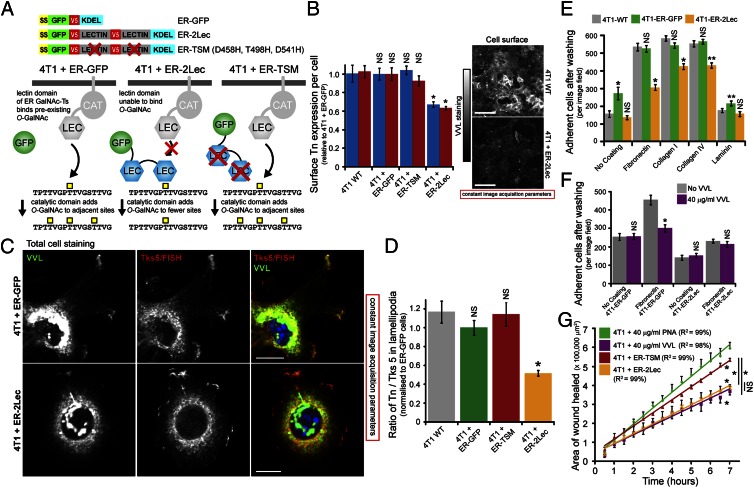Fig. 6.
Inhibiting ER-localized GalNAc-Ts lowers the adhesiveness and motility of 4T1 carcinoma cells in vitro. (A) Schematic of makeup and effect of the ER-specific GalNAc-T inhibitor. (B) Mean surface Tn expression ± SEM in model 4T1 cells. *P < 0.01 relative to 4T1-WT. (Scale bars, 10 µm.) (C) Costaining Tn (VVL) with the lamellipodia marker Tks5/FISH in model 4T1 cells. (Scale bars, 10 µm.) (D) Quantification of VVL/Tks5 staining ratios from lamellipodia in model 4T1 cells (n = 10 images per sample). *P < 0.01 relative to untreated cells. (E) Mean adhesive strength ± SEM of model 4T1 cells. *P < 0.01, **P < 0.05 relative to 4T1-WT. (F) Mean adhesive strength ± SEM after VVL preincubation for 20 min. *P < 0.01 relative to untreated cells. (G) Mean of wound closure ± SEM of 4T1-TSM and 4T1-ER-2Lec (n = 2 experiments). PNA- and VVL-treated experimental samples from Fig. 5E are shown for comparison. *P < 0.01 relative to PNA-treated cells or stated samples. Nuclei stained using Hoechst.

